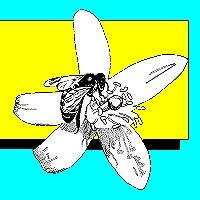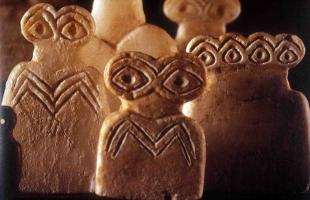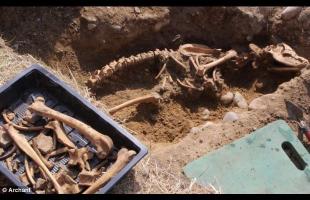APIS Volume 4, Number 4, April 1986

In this issue
- Sorting out Priorities: Financial and Personal
- Sweet Old Remedy: Sugar, Why Not Honey?
- Comb Renovation: More Details
- Honey Bee and Citrus Connection: A Symbiosis?
PRIORITIES
What are our priorities and how do we evaluate them? That's the question poised by two beekeeping publications recently. Dr. Jaycox in his December issue of The Newsletter on Beekeeping quotes a New Zealand source as asking whether American foulbrood in his country is as important a disease as nosema, given that the latter costs hundreds of tons of honey per year. This could be asked in Florida as well. Dr. Jaycox also questions effort and energy put into tracheal mite research and regulation while nosema is ignored. [Editor's Note 5/11/1997--Dr. Jaycox has retired; his newsletter is no longer available.]
Another New Zealander, A.G. Matheson, Ministry of Agriculture and Fisheries in his Beekeepers' Bulletin also questions whether the right priorities are begin placed on running a successful business when financial analysis is subordinated to other activities. As he says,"Many beekeeper are making the necessary adjustments. Cash books, cash flow forecasts, budget forecasts are as important as a hive tool and smoker." The financially prudent, he says, not necessarily the least indebted, shall survive.
See also February and September 1984 and January 1985 APIS)
SWEET OLD REMEDY: SUGAR, WHY NOT HONEY?
Here's a twist. The Winter edition of the Sugar News from the Florida Sugar Cane League indicates that granulated sugar is a "sweet old remedy." According to the article, a physician in Buenos Aires, Argentina applied sugar to an abdominal wound and was surprised at the results. A Mississippi orthopedic surgeon successfully treats skin ulcers by pouring granulated sugar on them. He also has seen it work on lacerations, burns, ulcers, amputations, surgical wounds, gunshot wounds and compound fractures. Finally, besides the reduced infection rate, the treatment also results in fewer and smaller scars. Here's the rub, granulated sugar is messy and will not stick to a wound so a paste is made which is slathered on.
The article concludes that until the day your neighborhood druggist stocks sugar paste, use a home remedy of sugar and mix it with butter or margarine; it might look and taste like cookie dough, but it's just as effective and comforting as anything available on the market. Not quite--an older and sweeter remedy is honey itself, Mother Nature's original first aid kit.
ROOTING OUT OLD BROOD COMB
More evidence now corroborates the notion that old combs can lead to bee management problems. As reported by Dr. Jaycox in his March issue of "The Newsletter on Beekeeping," a new study soon to be published by J.P. Koenig, G.M. Boush and E.H. Erickson in Journal of Apicultural Research compared various kind of comb. Levels of disease ranged from negligible to over 6 percent, with the lowest level on new comb or super comb, the highest associated with old brood comb.
In past issues of this newsletter (July 1984 and October 1985), I reported that old brood comb may harbor not only chalkbrood fungus, but also nosema spores and supports wax moth populations far better than comb recently drawn from foundation. Aggressively renovating the bee nest by systematically removing old comb appears to be a management technique with promise. Again, this should not be done all at once, but slowly and regularly over a period of time. Dr. Jaycox also recommends the beekeeper experiment by doing a proportion of his/her colonies and then comparing chalkbrood infestation with those that were not renovated. Remember, however, that rooting out old comb is only one variable in the chalkbrood enigma. Others, such as the genetic resistance of the bees and prevailing environmental conditions which favor fungal development must also be taken into consideration
HONEY BEES AND CITRUS
Recently, several beekeepers have indignantly contacted me about pesticides used in citrus groves, and the effects on their bees. Little historical information is available on pesticide poisoning in citrus groves, and the number of beekeepers clamoring to get into groves each year belies widespread problems. This is an extremely sensitive topic and should be brought up with great care for it can easily damage a long-standing relationship that exists: The Florida Citrus-Bee Industry Connection.
I published an article in The Citrus Industry, a trade journal, on this historic connection last year about this time. It was slanted toward grove managers/owners, informing them about the symbiotic (mutually beneficial) relationship that exists between beekeepers and citrus industry folks, and how it might be affected now and in the future by unforseen events. I suggested the Florida citrus industry has been helped by the beekeeping industry in several ways by receiving virtually free of charge more-than-adequate pollination efforts for specialty varieties requiring cross pollination and indirect benefits to all fruit, including increase in size, juice and seed content and/or early maturity.
The citrus industry has also helped beekeepers, I said, by leading the way in promotional efforts; the honey promotion plan's potential success will be partly based on the fact that generic promotion of Florida citrus is effective. In a more concrete way Florida grapefruit and honey have been featured together in citrus advertising. It must always be kept in mind by both parties that the citrus-beekeeping industry symbiosis, like most mutually beneficial relationships, is tenuous and constantly changing. Certainly, the citrus canker and freeze situations have threatened to destroy the connection. In addition, as discussed above, use of pesticides can also bear bitter fruit. The key to keeping the relationship harmonious is communication between the persons involved. The beekeeper must empathize with the problems of the grower/manager and vice versa.
Sincerely,
Malcolm T. Sanford
Bldg 970, Box 110620
University of Florida
Gainesville, FL 32611-0620
Phone (352) 392-1801, Ext. 143 FAX: (352)-392-0190
http://www.ifas.ufl.edu/~mts/apishtm/apis.htm
INTERNET Address: MTS@GNV.IFAS.UFL.EDU
©1986 M.T. Sanford "All Rights Reserved






















